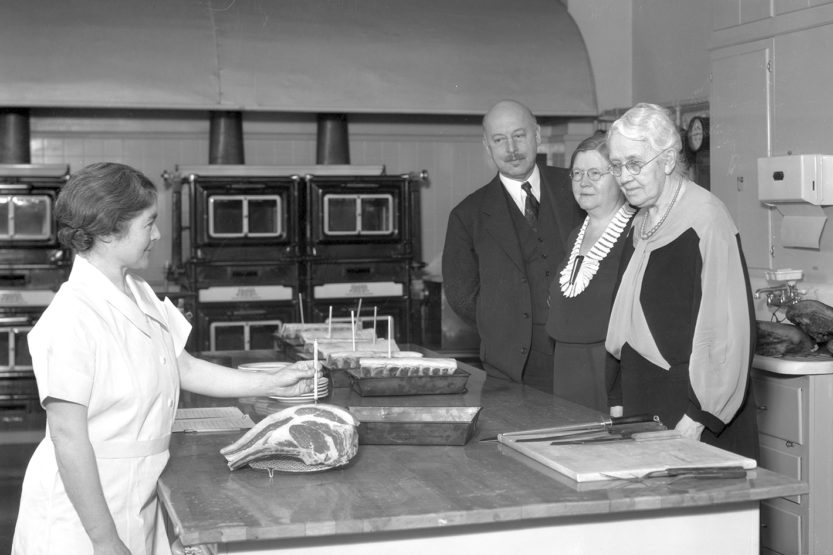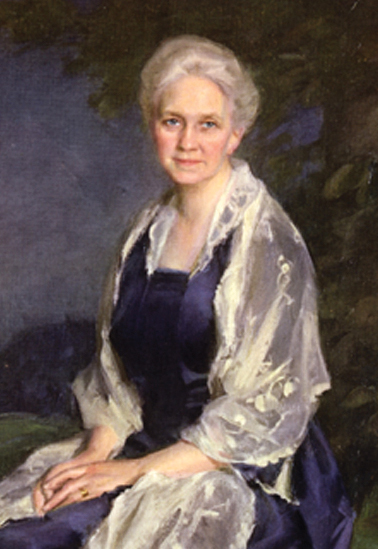Ingenious: When science came home
 Isabel Bevier (right front) and two colleagues inspect the foods lab, where a young woman explains how to measure the temperature of a cut of meat. (Image courtesy of UI Archives)
Isabel Bevier (right front) and two colleagues inspect the foods lab, where a young woman explains how to measure the temperature of a cut of meat. (Image courtesy of UI Archives) Beyond the main doors of Bevier Hall, the stairs rise to a landing adorned with a large painting of a larger-than-life woman—Isabel Bevier, for whom the building is named.
In 1900, Bevier arrived at the University of Illinois as head of the nascent Household Science Dept., one of the first of its kind in the nation. When a dean asked her how much class credit students would get for baking bread, Bevier replied, “Not much, because we’re not baking much bread.”
Trained in chemistry and nutrition, Bevier was determined to put more science into household science (since known as home economics). Her innovations included putting a thermometer to use in meat cookery and establishing a laboratory house, with experimental kitchens and rooms for the study of energy efficiency and interior design.
Domestic science at Illinois expanded rapidly under her leadership, but her approach was not without controversy. The program was heavily criticized by farming organizations for its difficult entrance standards and science-dominated curriculum. Eugene Davenport, dean of the UI College of Agriculture, Consumer and Environmental Sciences, reluctantly asked for Bevier’s resignation in 1909. But Bevier prevailed, thanks to an outpouring of support from national agricultural leaders. She retired in 1921, going on to implement domestic science programs at UCLA and the University of Arizona.
“She belongs to a worthy company of pioneers,” Davenport said. “She worked with pioneers of science, not content to follow beaten trails.”


